Sleep that first night was a little rough. My room was close to the kitchen so I heard music and the sound to people working when I went to bed around 10:30. I woke up at around 1:30 am to the sound of roosters, lots of roosters, crowing in the night. I eventually got back to sleep but it wasn’t super deep.
We had use of the hotel’s car to get to the met office, which was in Betio. It was a minivan, and it was actually the same car that bought us to the hotel from the airport.
The trip was probably 40 minutes, again because of the quality of the roads. There was a toll-booth just outside the city which help pay for the causeways joining the various islets. Tolls were 20 cents AUD.
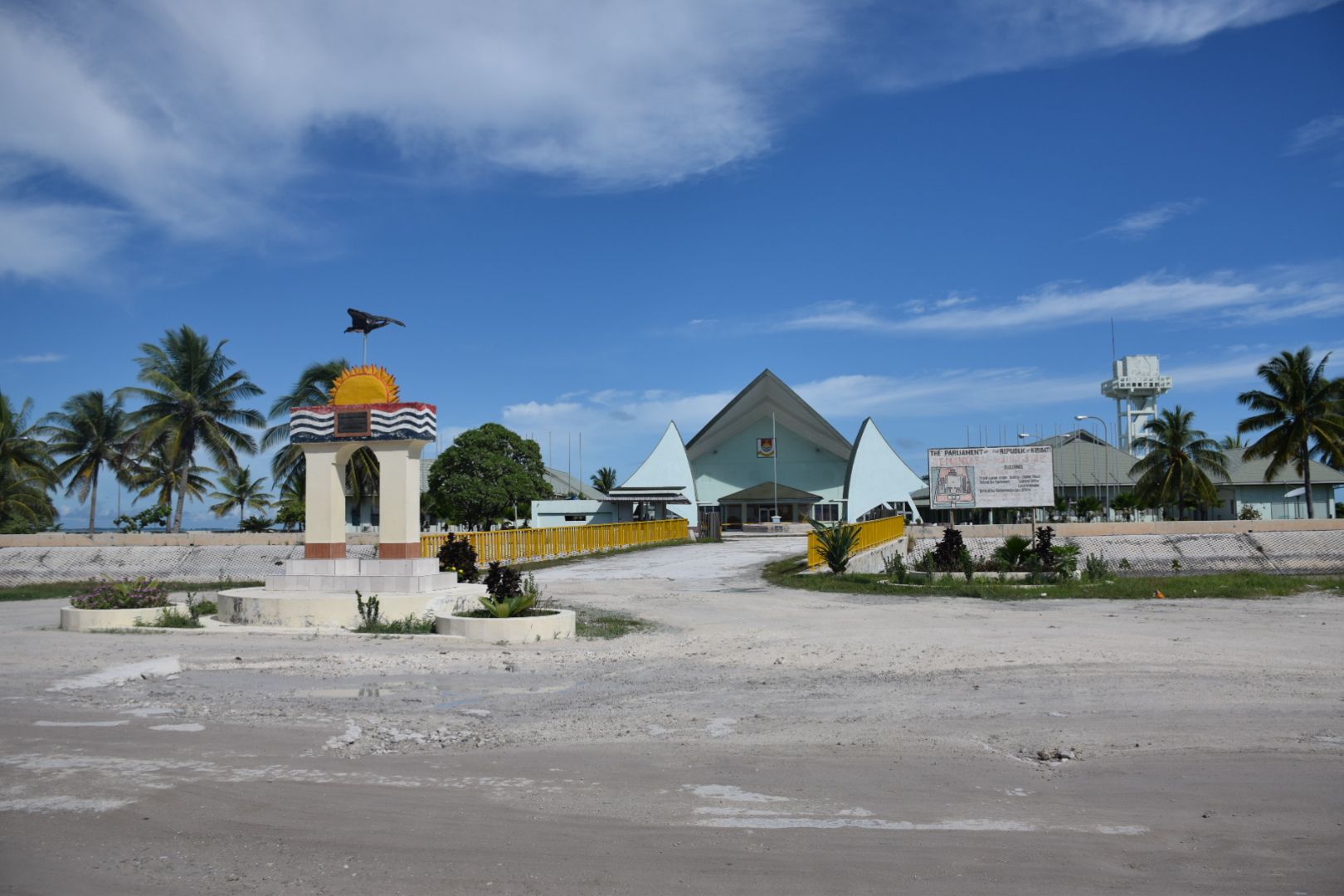
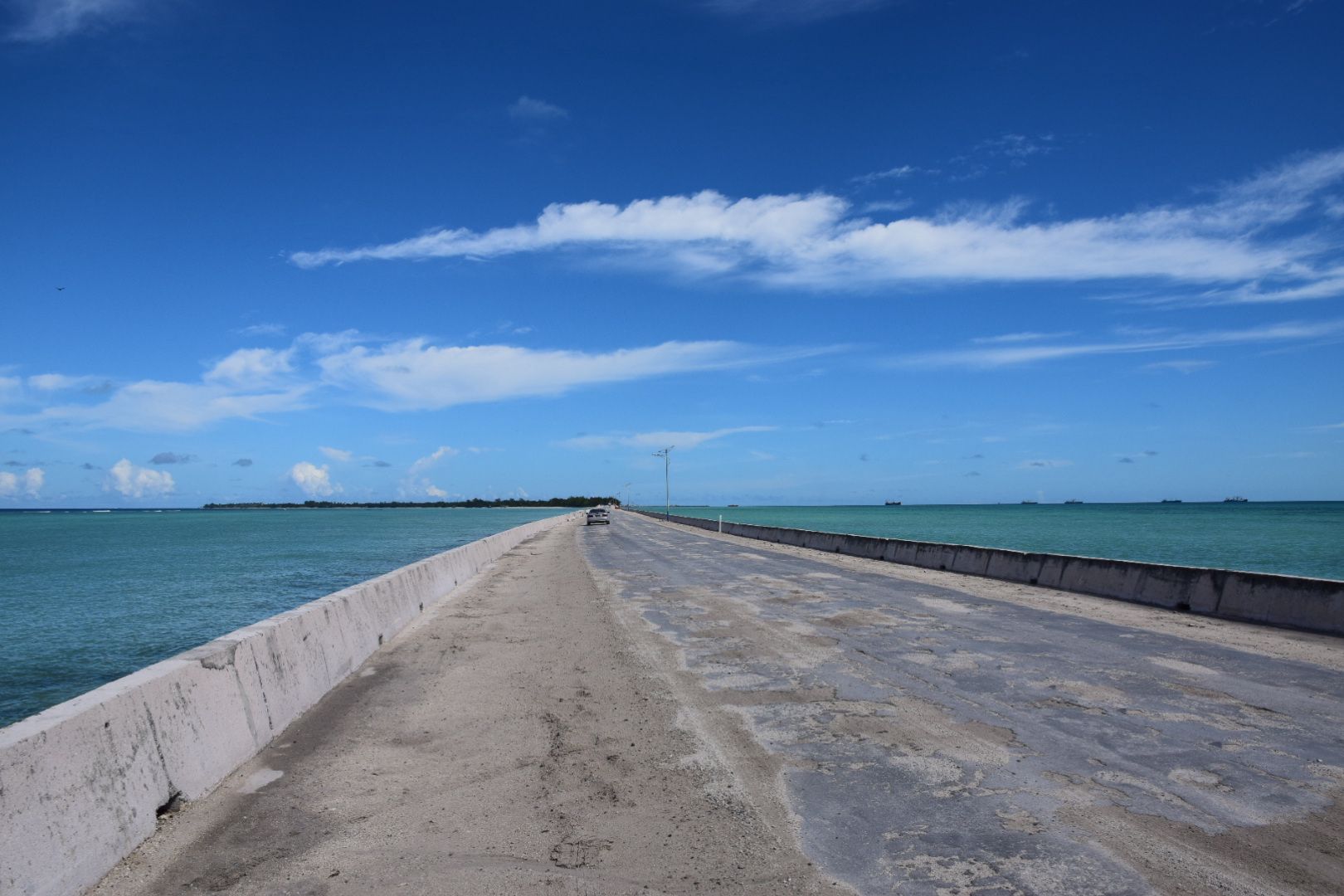

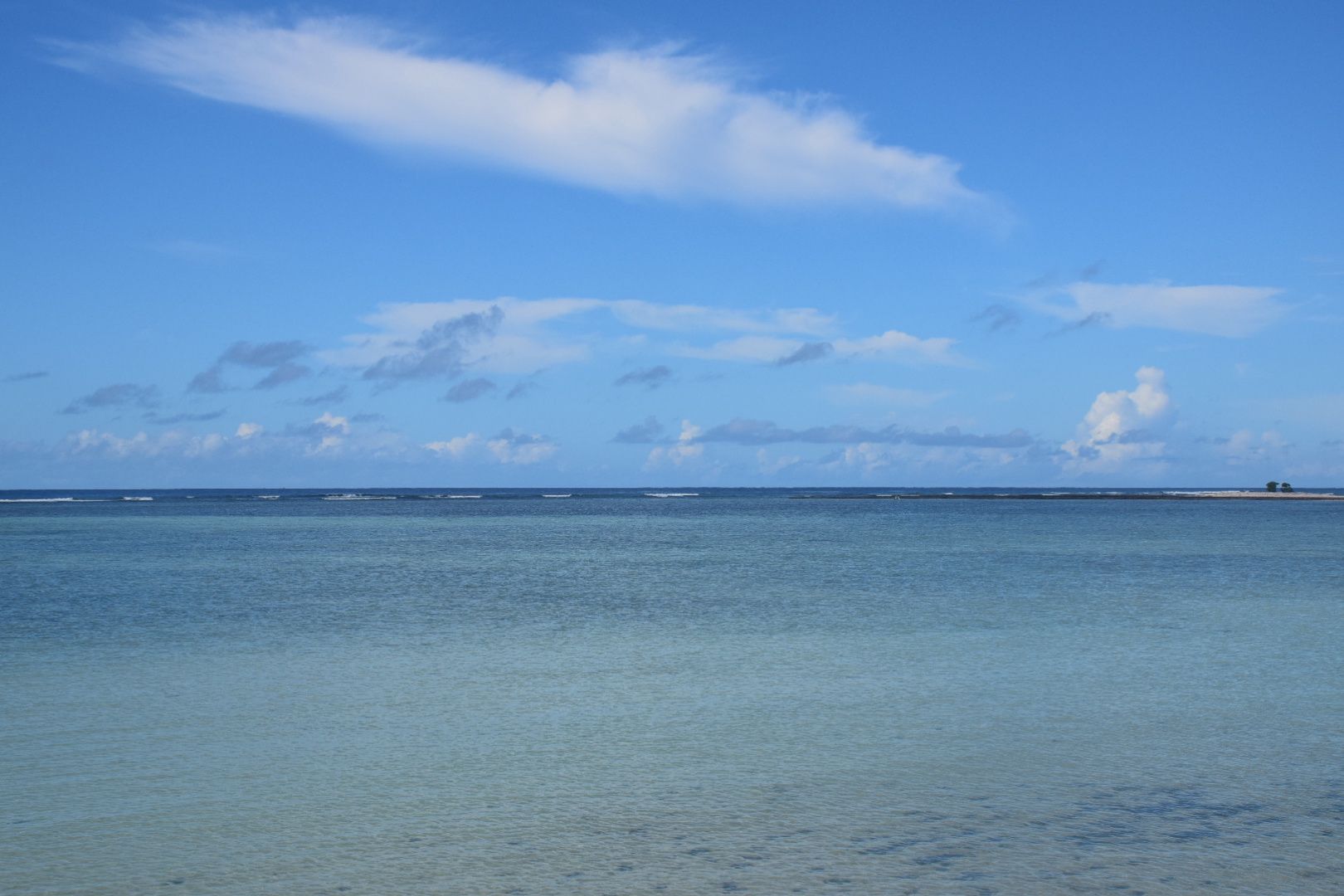

One thing I remember about the cars: most of them had Japanese number plates. Turns out that many of them were “donated” from Japan. That meant a lot of Toyotas, Nissans, and other Japanese car makers.
Oh, one thing to consider if you’re travelling to Kiribati: you’d best off taking cash to pay for things. The Australian dollar is used for all transactions. I believe cash was used to pay for most things like food, although I think credit card was available for our accomodation.
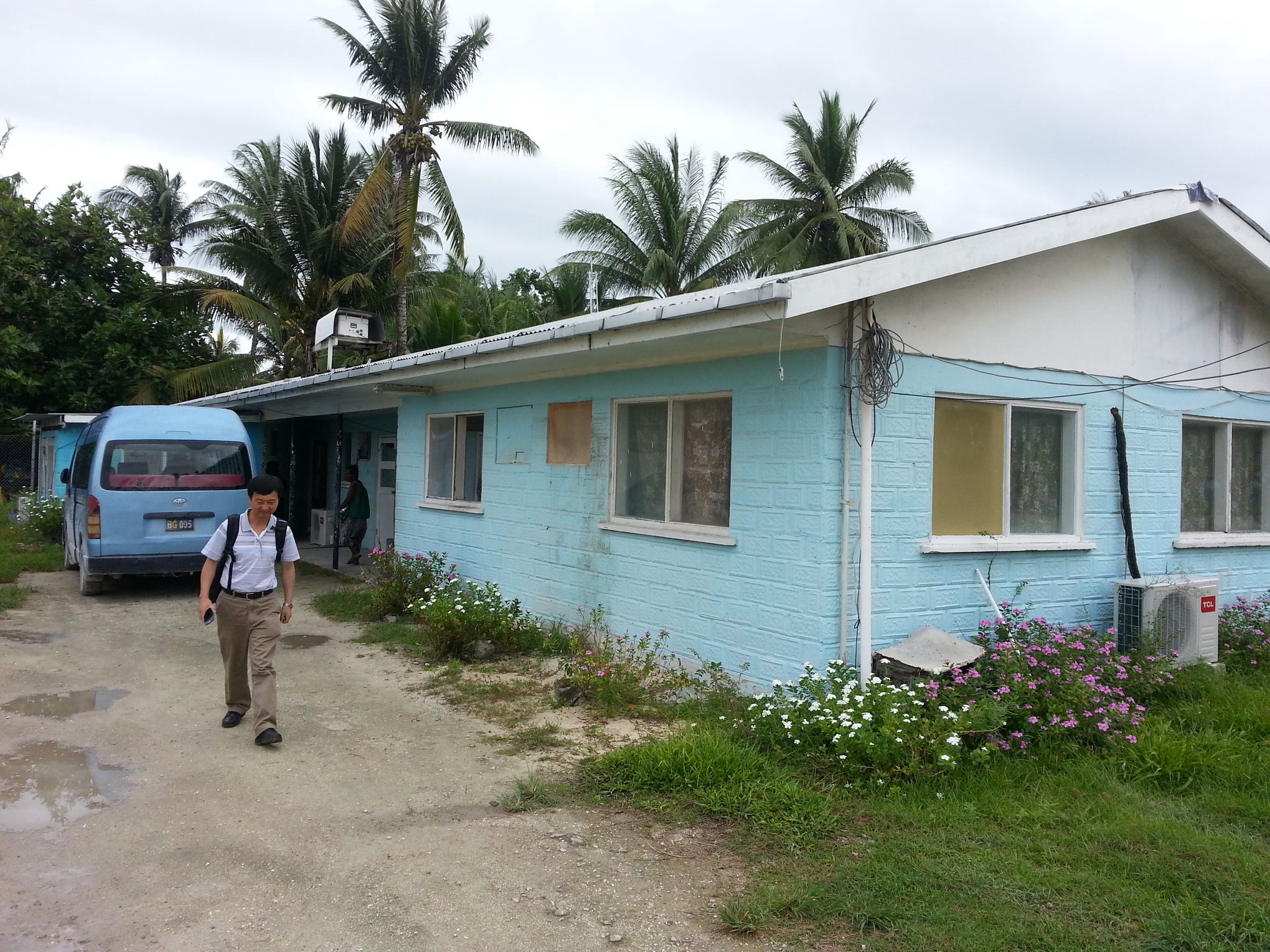
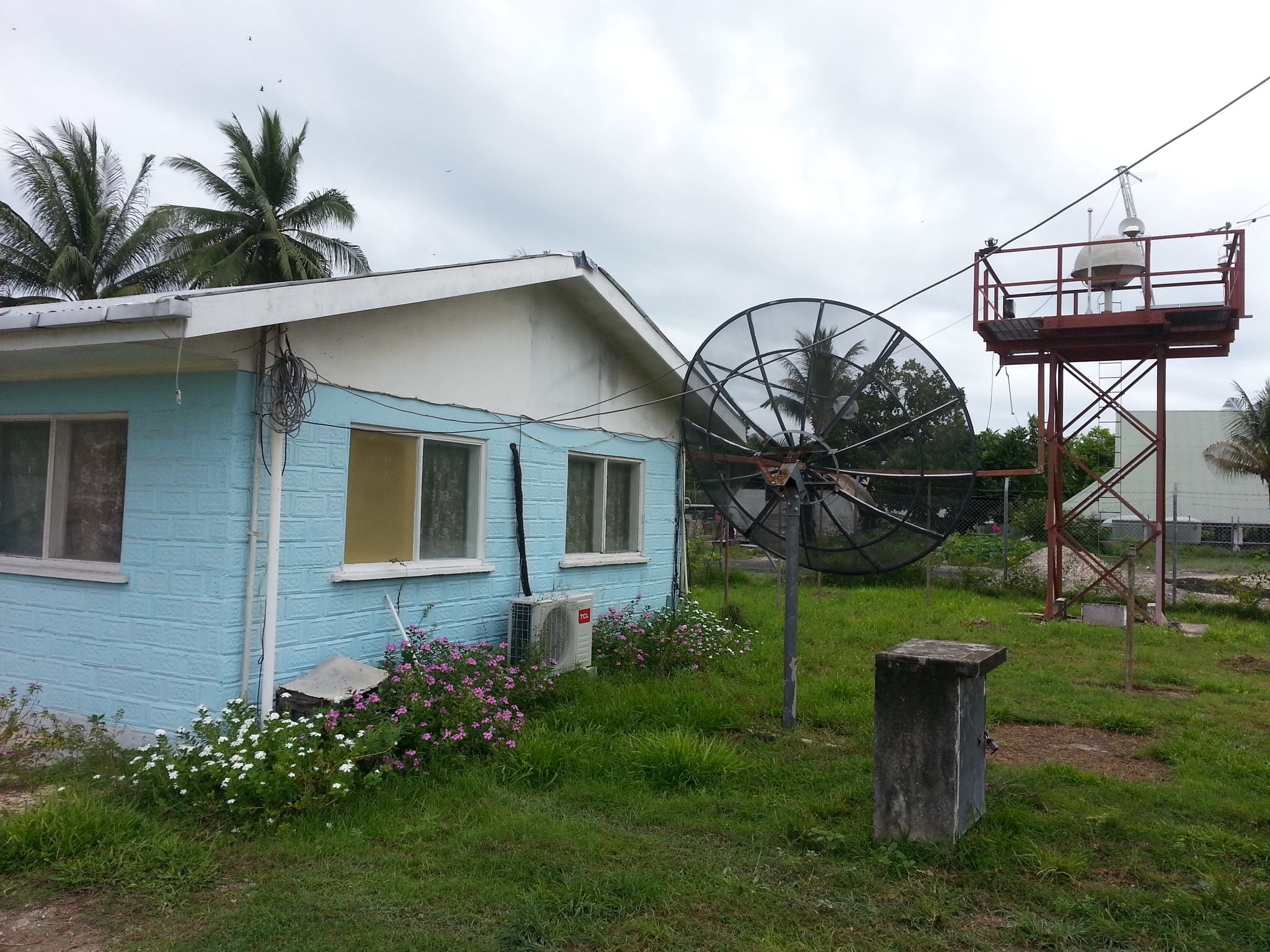
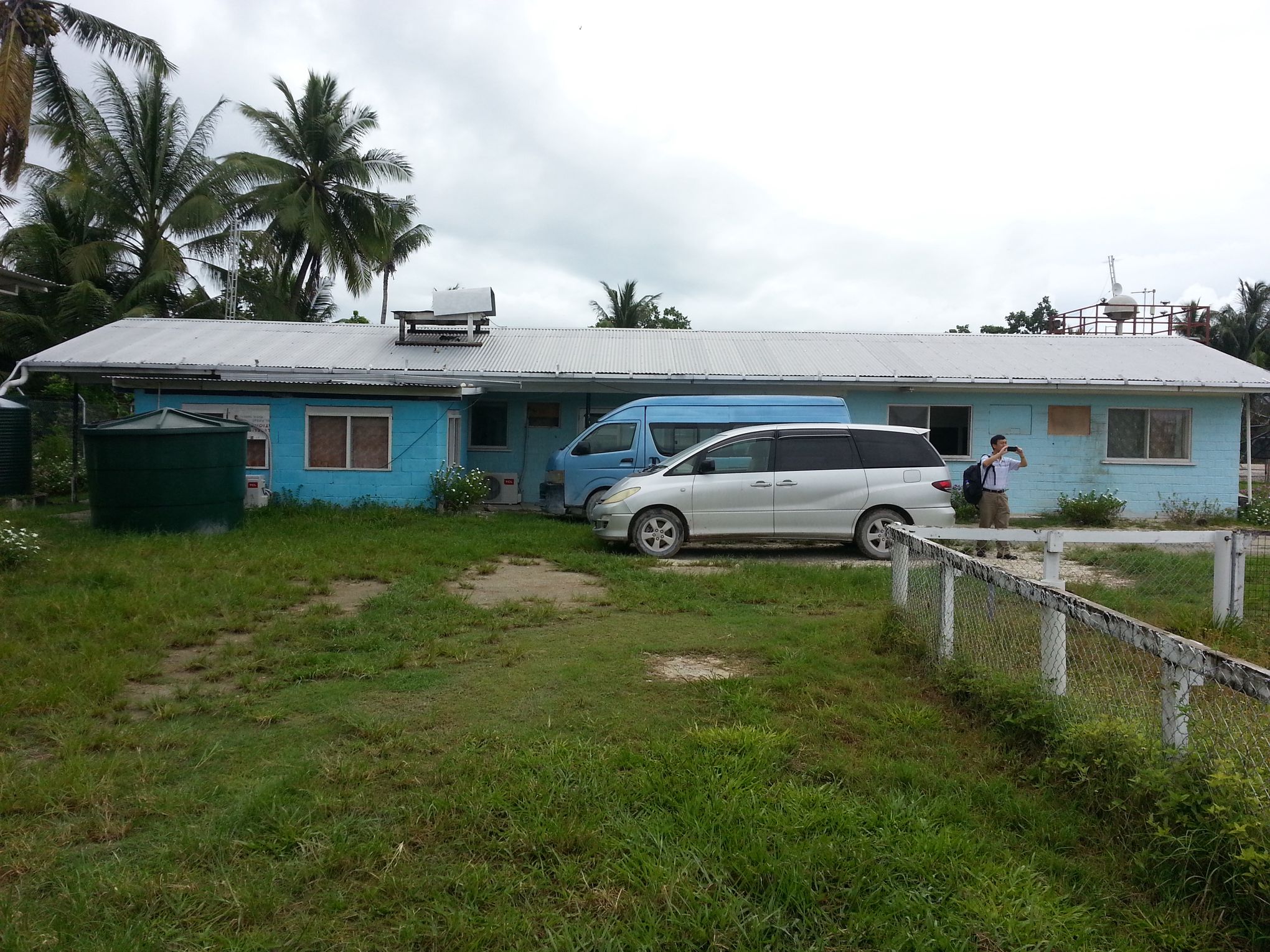
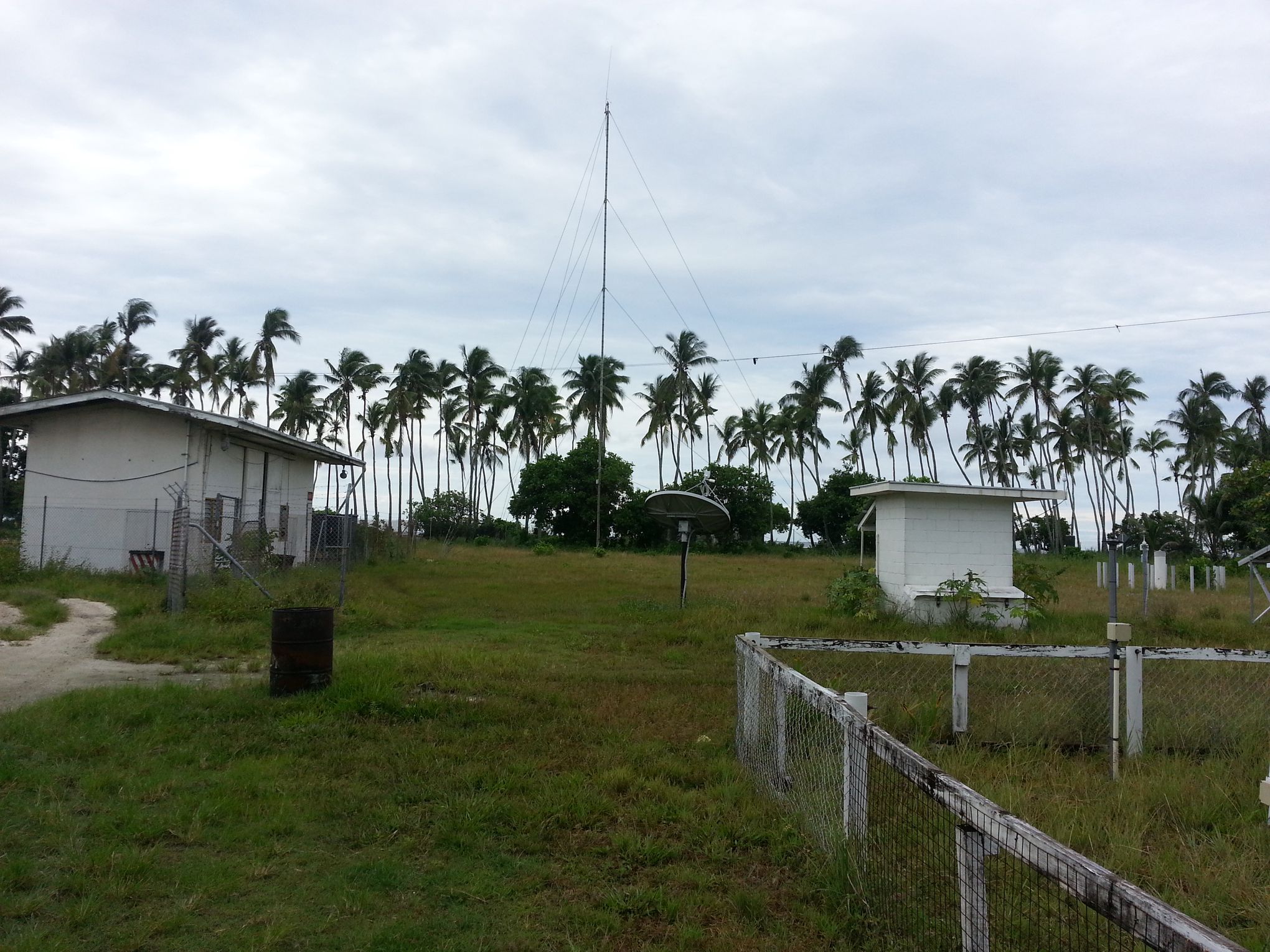
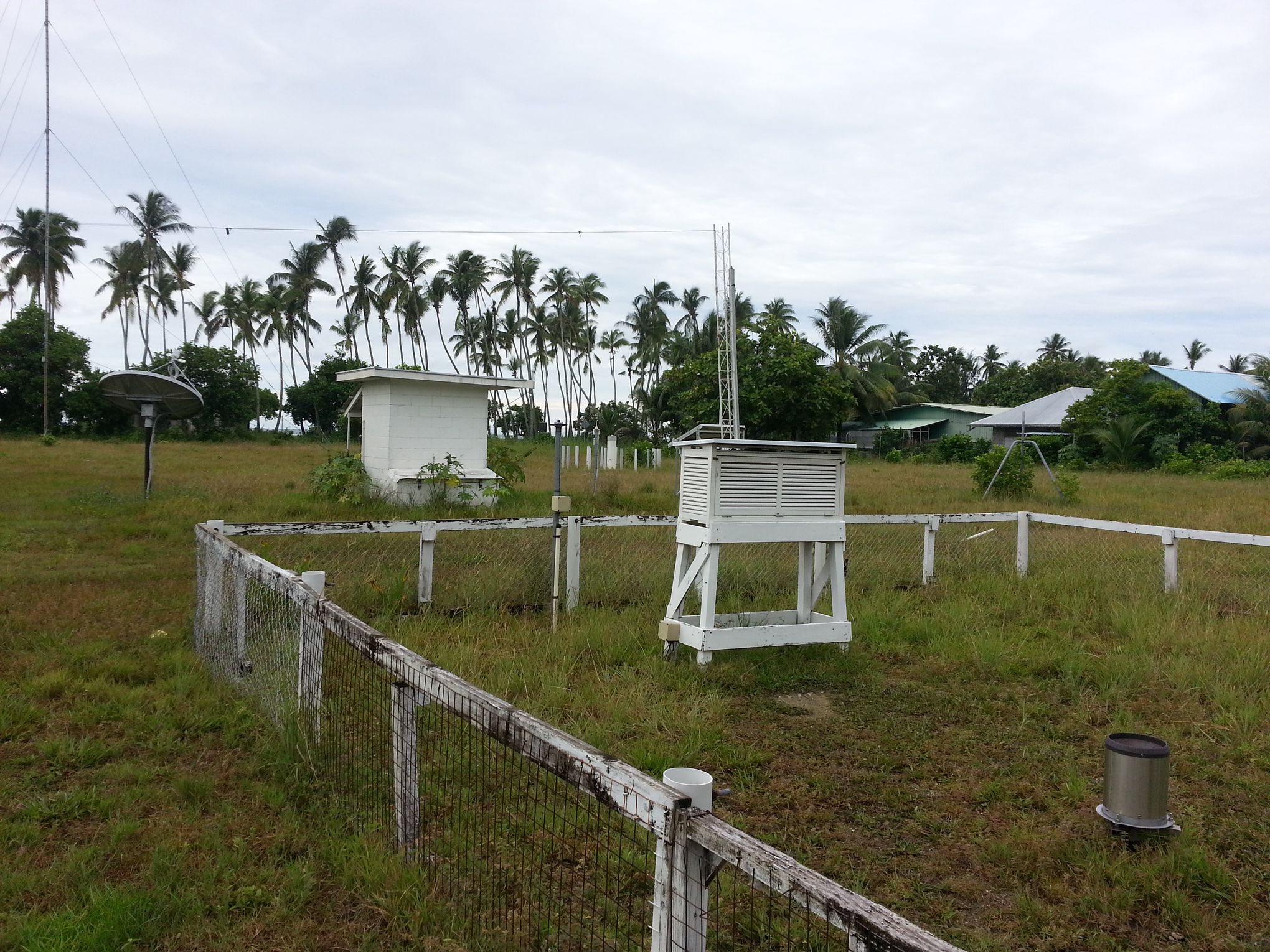
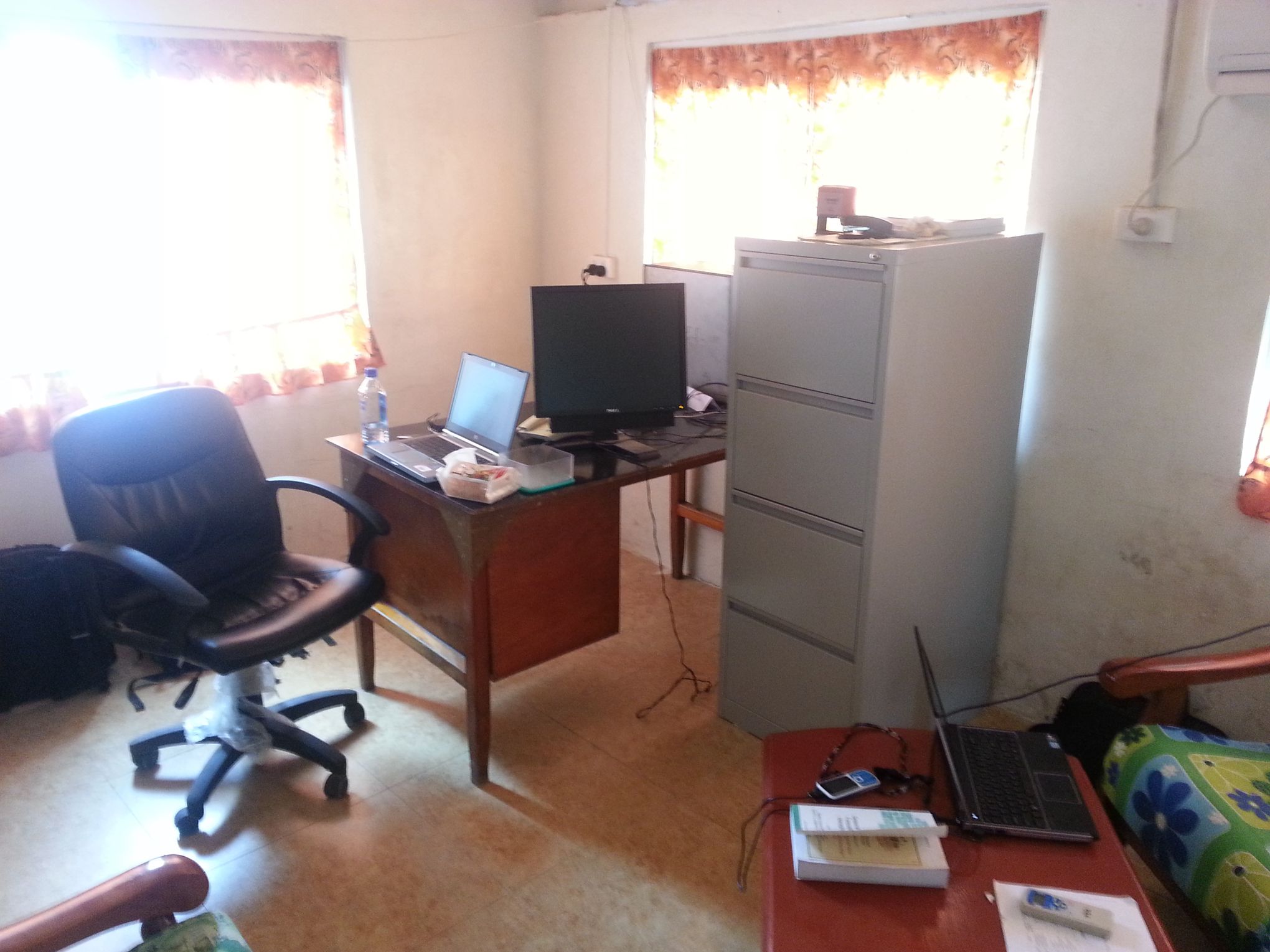
I don’t remember much about our time during our presentation except that we did it in a small room with a couple of couches and a screen as a projector. We did get to see how they launched a weather balloon, which we both found fascinating, if not a little alarming (it involved manually filling the balloon with hydrogen gas). I also remember that I bought crackers for lunch one day. I’m not sure why: probably because I wanted something “safe” to eat and I was too worried about or didn’t like many of the alternatives. I did manage to share the packet with everyone there.